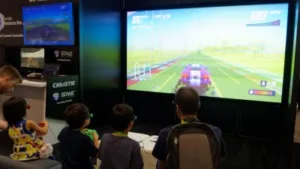Christie had no new products at the show but had a number of demos of projection mapping, its video over IP technology and one in particular that caught our attention. The company has a 240Hz projector and was showing the unit in a gaming situation using active glasses to give four different images, allowing four users to play a game, with each having their own view. Quality was good and there was little crosstalk that we could see.
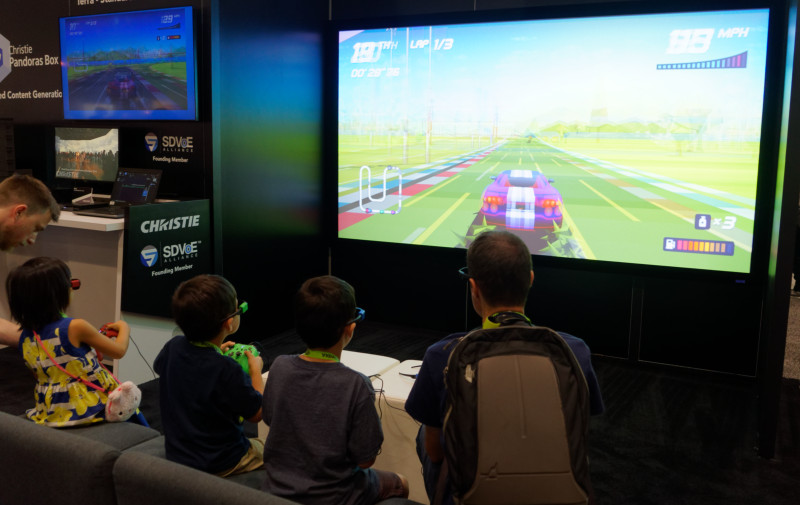 Four players were sharing a Christie screen at 240Hz. Image:Meko
Four players were sharing a Christie screen at 240Hz. Image:Meko
As it had done in Laval, Digital Projection had teamed up with TechViz to show how its projectors could be used in a stereo 3D set up with 4K at 120Hz using its Insight projector . TechViz was showing a range of immersive technologies from VR up to caves. As well as the displays, the firm was highlighting that it could help develop collaboration solutions.
Monitor specialist, Eizo, had a booth with 24″, 27″ and 32″ units on display including the CG319X, which was shown at NAB and started shipments in the US in July. (Eizo ColorEdge CG319X DCI-4K Supports HDR). Content creation is a good market for Eizo in the US, we heard.
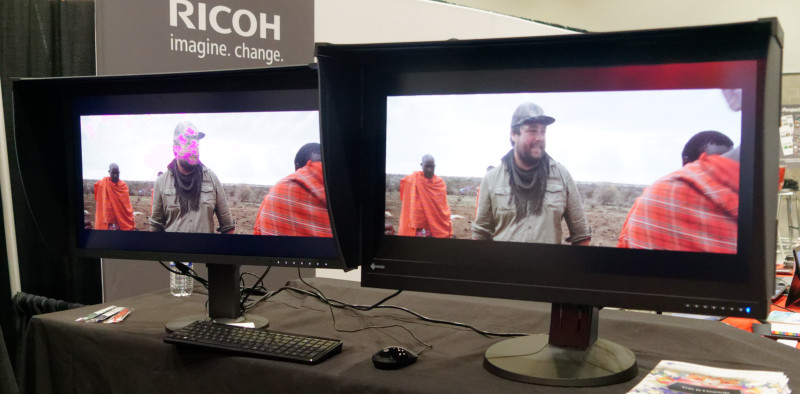 Content creators are a good market for Eizo. Image:Meko
Content creators are a good market for Eizo. Image:Meko
Fovi 3D was showing the autostereo 3D volumetric displays that it showed at SID. (FOVi3D Shows Light Field Displays)
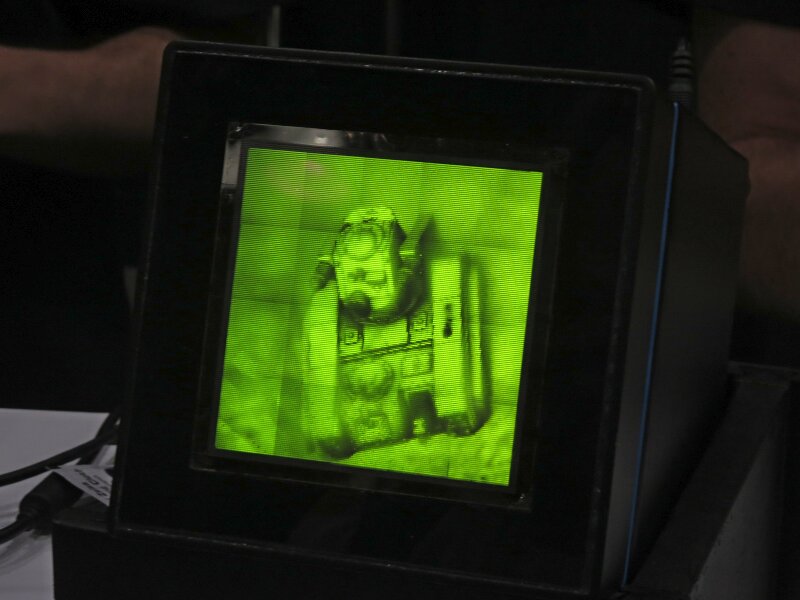 Fovi showed its volumetric display. Image:Meko
Fovi showed its volumetric display. Image:Meko
Google was showing its Daydream technology on the show floor and also had a new 360 degree professional level camera from YiHalo that uses 16 cameras for the main views and a separate one for the overhead view. The system has a controller app that allows a lot of adjustment of the image and stitching and the final video can be up to 8k x 8k at 30fps or 5.7K at 60fps. The images can be stitched as monocular or stereo 3D and realtime streaming can be supported.
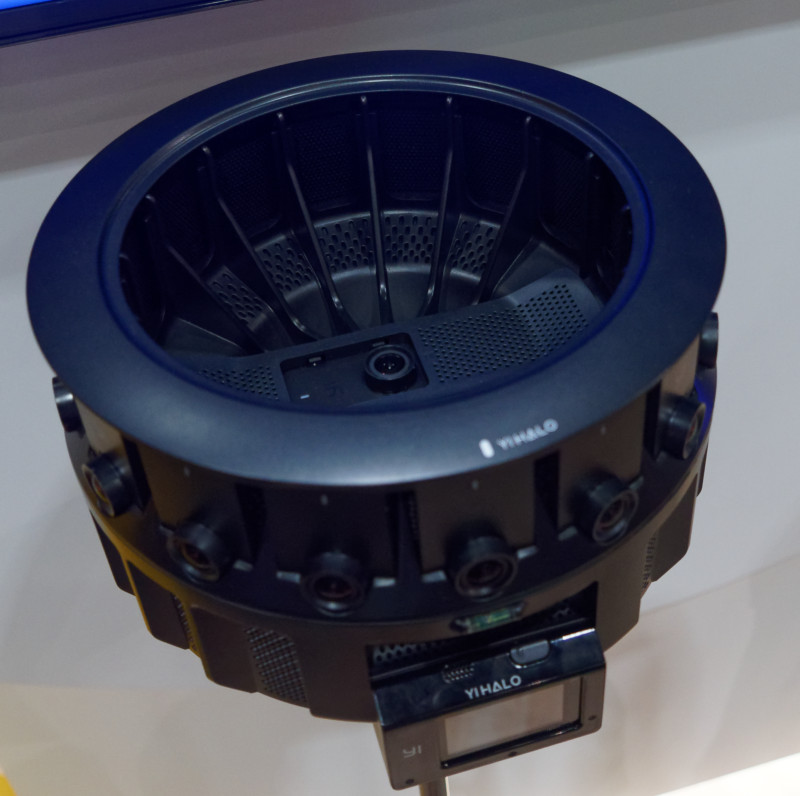 Google showed this camera with 16 + 1 imagers. Image:Meko
Google showed this camera with 16 + 1 imagers. Image:Meko
Intel was highlighting its ability to create graphics with CPUs as well as GPUs and had a demonstration of cloud gaming using its GameStream technology which allows PC-based games to be played on almost any client – Android, Mac, Linux, browsers or Smart TVs. The company, which has been recruiting graphics specialists from AMD, also put out a video on Twitter which teased that the company will release a new GPU in 2020. Much of the booth was focused on the server side of Intel’s business.
Looking Glass, which is based on a Kickstarter project, was showing its acrylic block-faced autostereo displays, which are based on autostereo lenticular 3D (thus matching the rule that ‘no display described as holographic is every really holographic’). We heard that 45 views are supported and with a 50 degree field of view. The displays looked very good, and part of this, we were told, is based on the observation by staff that adding a transparent block on top of the display makes the depth perception quite different. Staff also told us that the frame around the front surface of the acrylic was an important depth cue that helped the effect of depth to be strong.
We were surprised that the image looked good, as though it was bonded, but if there is a lenticular film, there has to be an air (or other material) gap to allow the lenticular lens to work. Staff at the show didn’t know the details of how the good visual quality is achieved. There are two displays available, an 8.9″ based on an 2560 x 1600 display at $899 ($599 for early buyers on Kickstarter) and a 15.6″ 3840 x 2160 version at $2,500.
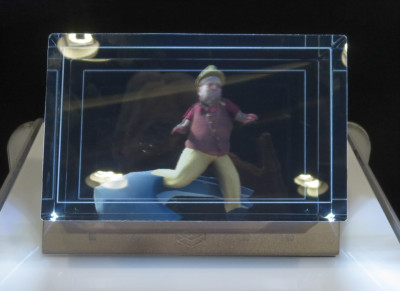 The acrylic block really adds to the depth effect. Image:Mek
The acrylic block really adds to the depth effect. Image:Mek
Nippon Carbide was showing its Nikkalyte reflective film material, used in traffic and other signs, to create images that appeared to float in space in front of the plane of the display. The effect is similar to that achieved by Asukanet, that we have reported on several times. The film uses the ‘three mirror effect’ and is apparently able to support images up to 3m x 3m or even 5m x 3m. The film was not carefully aligned, so the optics seem quite robust.
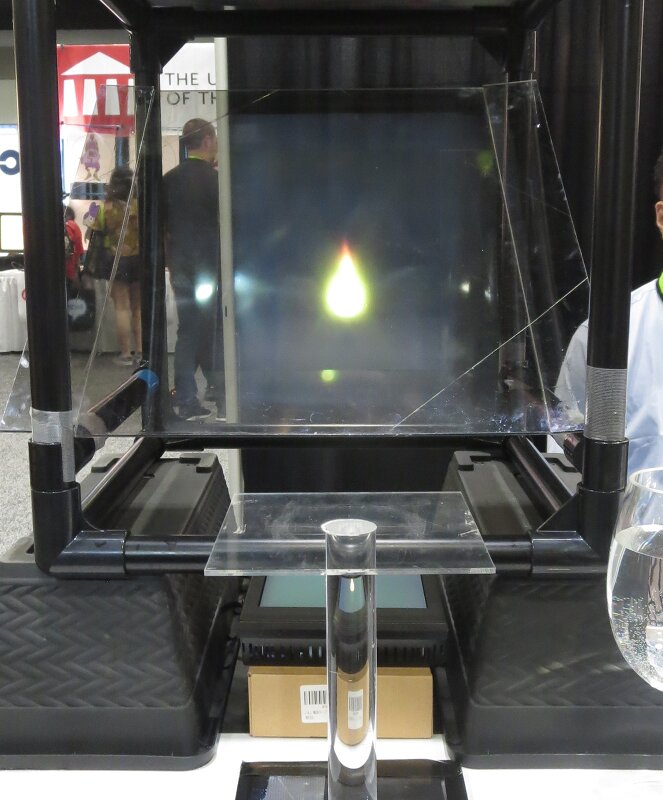 A special film is used to place the image in front of the display. Image:Meko
A special film is used to place the image in front of the display. Image:Meko
Teradici had a number of partners at the show and was present on their booths (Google, Microsoft, AWS and AMD). We have known Teradici as a chip company that developed a codec for acelerating thin client operation and a developer of the ‘zero client’ concept. However, over recent years, it has increasingly moved its PCoIP technology to a software base. Although its ASIC-based technology is still faster and is still available, staff at the show told us that by 2019 or 2020, the performance of software on the latest processors will probably be better. Teradici’s software is used for AWS and also for VMWare Horizon, Microsoft Azure and Google Cloud.
Wacom held a special event that took a very long time to explain that the company wants to move away from being seen as just an ‘electronic pen’ company to become a more generic input device supplier. Influenced, no doubt, by the fact that the company’s new CEO used to work for HTC in the Vive group, Wacom is developing a new VR controller. At the moment this is just at the ‘proof of concept’ stage. It is said to have very good tracking of room-scale location and the unit shown at the event was wired. However, in the longer term, there is a plan to develop a wireless solution.
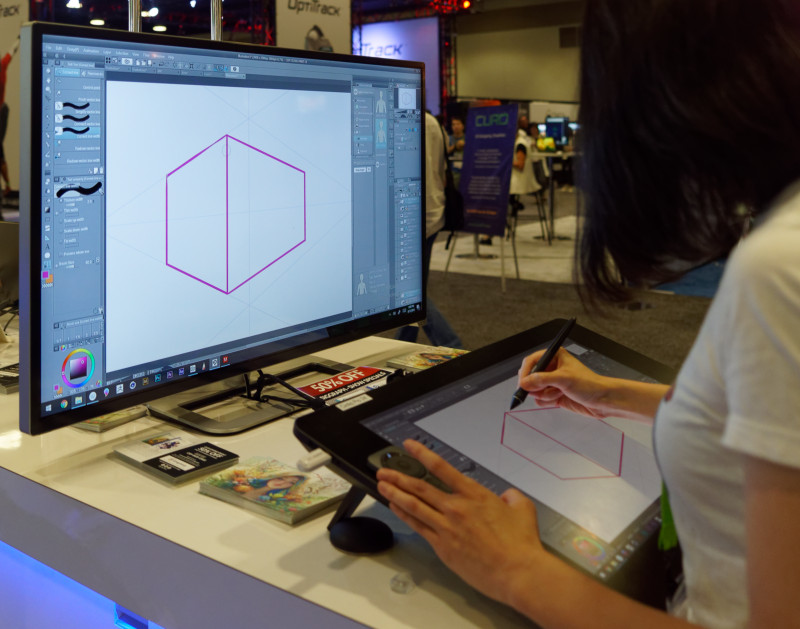 Wacom is developing AR and VR controllers as well as pens. Image:Meko
Wacom is developing AR and VR controllers as well as pens. Image:Meko

